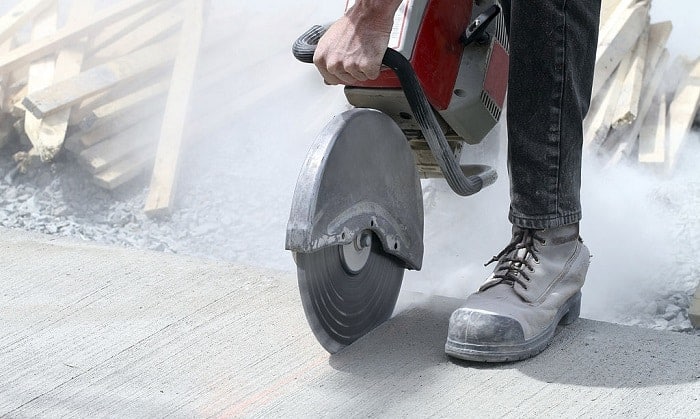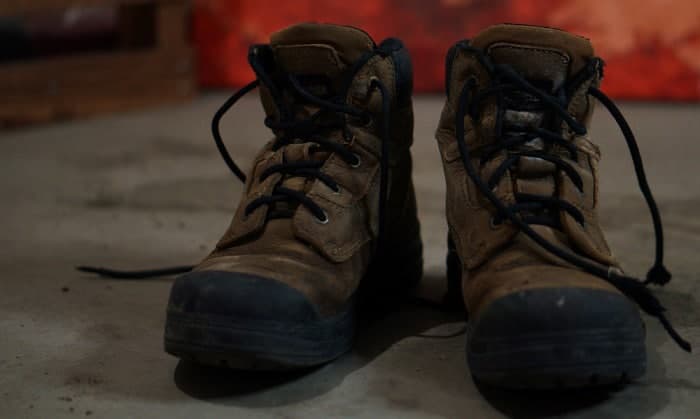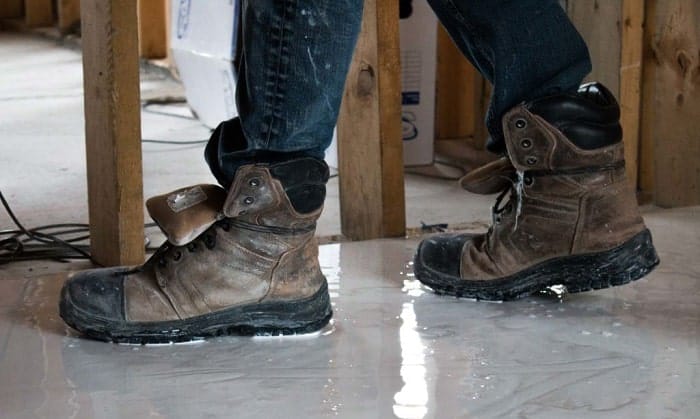It can be mind-bending to choose the right safety gear at hazardous workplaces. A good safety hat, check. The best work gloves, check. But what about boots? Should you go for regular work boots or splurge for extra features like a steel toe or steel tank?
While some people say steel toe work boots provide a higher level of protection and comfort, others say steel toe boots can be extremely bad for the wearer. So, are steel toe boots bad for your feet? The answer is both. Steel toe boots offer amazing benefits, but if worn improperly, they can harm your feet and cause health problems in the long term.
In this article, we will provide a detailed explanation of why steel toe boots can harm your feet, along with tips on choosing the right safety boots and eliminating the problems your steel toe boots might be causing.
Table of Contents
What are Steel Toe Boots
To understand the full benefits of steel toe boots, let’s first quickly go through the definition.
Steel toe boots are also called steel-capped boots, steel toe caps, or safety boots. These sturdy and durable boots are reinforced with protective caps under the upper toe area. Traditionally, the cap is made of steel, but nowadays, designers might use other composite materials like plastic or aluminum to reduce the weight of it.
Despite adding a bit of extra weight, steel is preferred due to its sturdy and long-lasting nature. A piece of thin steel in your shoes might sound terrifying, but don’t worry because the steel cap is inserted very carefully in the shoe’s structure. It is unlikely for this piece of steel to make direct contact and hurt your feet.
This protective reinforcement will prevent your toes from many types of injuries, such as falling objects, slips and falls, cuts, burns, punctures, and compression. In fact, steel toe work boots are mandatory; the department of labor OSHA (Occupational Safety and Health Administration) requires certain workplaces’ employees to wear safety work boots.
To learn more about the functions of a steel toe, watch this video: Will steel toe boots save your toes? in which the boots survive multiple extreme tests.
Why are Steel Toe Boots Bad for Your Feet
Despite all of the benefits, if worn improperly, steel toe boots might be inferior for your feet. Here are some common problems a pair of wrong safety boots can cause:
- Tight boots: The steel toe cap is firm and sturdy, and designers attentionally make the cap fit the toes snugly to maximize protection and enhance balanced steps. There’s not much room for your toes, so they can rub against the cap quite often when you wear new or tight boots. In addition to that, most safety work boots feature a steel tank in the boot’s sole for protection against punctures, which makes the shoes even less flexible. When you wear a tight pair of bulky shoes all day, chafing is inevitable.
Once you learn how to choose the accurate size, design, and materials of the boots, this problem will be long gone. Keep reading, as we will provide the necessary information in the next part of the article.
- Loose boots: Tight boots will cause chafing, but loosen boots are no better. If the boots are a bit loose, one side of your feet will constantly rub against the shoes, which leads to blisters. More importantly, wearing loose work boots when climbing a ladder or walking on uneven terrain is highly dangerous because your steps might be unbalanced.
Again, you will solve this problem once you learn how to choose an accurate shoe size. However, if you already own a loose pair of work boots, no worries, there are techniques you can use to tighten them.
- Sore legs: If you are new to the world of heavy-duty safety gear, having to move with extra weight all day will lead to sore legs, especially when your job involves carrying heavy loads. However, the boots offer you protection against falling objects. Sometimes, we can’t have the best of both worlds, right?
As mentioned above, toe caps come in a variety of materials like plastic and aluminum, which are lighter than steel. If you are not used to heavy work boots, we recommend trying the other materials.
- Repetitive strain injury: Don’t panic! This only happens when you ignore all of the problems above and keep wearing your unfit steel toe work boots. The discomfort your feet have to put up with every day will eventually lead to pain in your knees, spines, hips, or even your neck.
Besides that, plantar fasciitis is a symptom most heavy-duty workers experience. Know that there are work boots for plantar fasciitis on the market as well.
Tips to Get Rid of Foot Problems from Steel Toe Shoes
Choose the right size, design, and material
Choosing the accurate size of work boots is crucial as it affects your well-being. Here are a few useful tips on buying the right size, shape, and material:
- Putting on the right socks: Before you purchase work boots, put on the pair of socks that make you feel the most comfortable and confident.
- Trying in both boots: It’s common to have the dominant foot a bit bigger than the other. Before purchasing, make sure you try both boots on. If both of them don’t fit well, try another design.
- Wearing boots: When the boots are on, your heel should not rub against the back of the boots. Your toes should have enough room to move. When you walk and run, they don’t rub against the fabric. Make sure there is no painful pressure on the sides of your feet. Finally, the boots are not too heavy for you to walk freely.
- Choosing the right boot material: The boots should feel pleasant to your feet. A material like leather will stretch over time. If you buy leather work boots, make sure they fit snugly.
Fix tight or loose boots
If you plan to buy a new pair of safety work boots, remember our tips on choosing the correct size. But if you already own a pair that is a bit loose or tight and encounter the problems above. You can fix them in a few easy steps:
- Tight boots: Try shoe stretch spray to size them up. You can easily buy a bottle of shoe stretcher on Amazon or from a local supermarket. The stretcher will not only stretch tight-fitting boots but also soften and condition them, leaving your feet much more comfortable when wearing the shoes. These stretchers work on many different materials (suede, linens, leather, etc.). If you are working with light-colored boots, avoid tinted stretchers and read the instructions carefully before use.
- Loose boots: The easiest way is to tie the boots’ laces more tightly. But if you have steel toe pull-on work boots, a quick and effective method is to wear thick socks. Make sure the socks are soft and comfy. Or else, it will cause foot problems like chafing or blisters.
In case thick socks do not do it for you, use padding for boots. Choose toe pads if you’re experiencing pain in the toe, and a good heel cushion will get rid of heel pain boots.
Do not wear work boots for a prolonged period.
Due to the protection functions, work boots are heavy, bulky, and sturdy. Therefore, avoid wearing them for a prolonged period. If you have painful experiences with your boots, no matter how hard you try to make them comfy, take them off when you have a break at work and do not wear them outside workplaces.
Maintain your boots well
Last but not least, in the long term, a properly maintained boot lasts longer and offers more comfort. Since work boots make direct contact with dust, dirt, and greases; it’s crucial to take good care of them with proper cleaning and preserving techniques. You cannot blame a steel toe boot for being bad for your feet when you do not clean it regularly.
Conclusion
In conclusion, steel toe boots bring great benefits, as they take the world of safety gear onto the next level. They are bad for our feet only if we wear and maintain them in the wrong way.
It is such a pleasure to have you here. We hope you find the needed answer to the question “are steel toe boots bad for your feet”. If you have further questions, feel free to leave them in the comment section. We will get to them as soon as we can. See you then!

Having worked in the field of personal protective equipment for over two decades, Andrew Carnegie is a specialist in the field.
At EDC, he strives to improve performance efficiency and promote workplace safety for EDC’s readers and customers. He also researches the most up-to-date equipment that has earned relevant accreditation for use in a wide range of industries and specialties.




